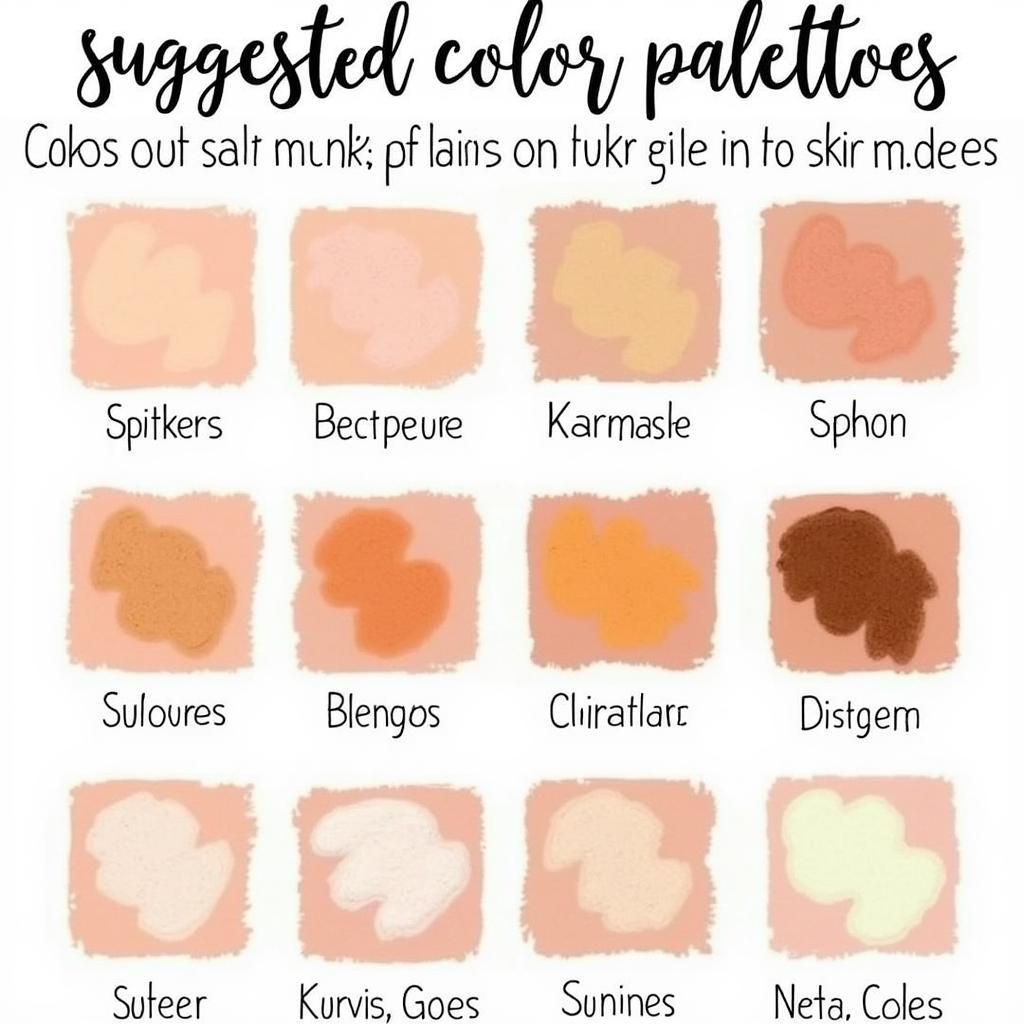Blending color in a tattoo is a crucial skill that elevates the artwork from simple blocks of color to a dynamic, lifelike image. Mastering this technique requires understanding color theory, needle control, and practice. This article will delve into the art of how to blend color tattoo, providing valuable insights and practical tips to help you achieve seamless transitions and vibrant results.
Similar to what is base color hair, understanding the foundation is key. Before diving into the specifics of blending, it’s essential to grasp the fundamentals of color theory. This involves understanding the color wheel, primary, secondary, and tertiary colors, and how they interact with each other. Knowing which colors complement and contrast each other is vital for creating smooth transitions and avoiding muddy or jarring combinations.
Understanding Color Theory for Tattoo Blending
The color wheel is your best friend when learning how to blend color tattoo. It visually represents the relationships between colors, allowing you to predict how they will blend. For instance, blending yellow and blue will create green, while red and yellow will produce orange. Understanding these relationships is the first step towards achieving seamless color transitions.
Techniques for Blending Tattoo Ink
Several techniques can be employed to blend tattoo ink effectively. The most common methods include whipping, stippling, and layering. Whipping involves moving the tattoo machine quickly and lightly over the skin, creating a soft, diffused effect. Stippling uses a series of dots to gradually build up color and create smooth transitions. Layering involves applying multiple layers of ink, gradually building up the intensity and depth of color.
What Equipment Do You Need for Color Blending?
Having the right equipment is crucial for successful color blending. High-quality tattoo machines, needles specifically designed for blending (like magnums), and a diverse palette of vibrant inks are essential. Properly calibrated machines and sharp needles ensure precise ink delivery and consistent results.
Practicing Color Blending Techniques
Practice makes perfect, especially when it comes to how to blend color tattoo. Start by practicing on synthetic skin or fruits like oranges or grapefruits. These surfaces mimic the texture of human skin and allow you to experiment with different techniques and color combinations without the pressure of working on a live canvas. Just like learning how to color a tattoo for beginners, consistent practice is key to improvement.
How to Choose the Right Colors for Blending
Choosing the right colors is crucial for achieving the desired effect. Consider the client’s skin tone, the overall design of the tattoo, and the desired mood or message. For example, warm colors like reds and oranges can create a vibrant and energetic feel, while cool colors like blues and greens can evoke a sense of calmness and tranquility. This is similar to understanding what colors do red and purple make for other artistic endeavors.
 Tattoo Ink Color Selection for Different Skin Tones
Tattoo Ink Color Selection for Different Skin Tones
Common Mistakes to Avoid When Blending Tattoo Colors
One common mistake is overworking the skin, which can lead to scarring and uneven color saturation. Another mistake is using too much ink, which can create muddy or blotchy results. Patience and precision are key to achieving smooth, seamless blends. Knowing what color corrects green can also help in correcting mistakes and ensuring color accuracy.
Tips from a Renowned Tattoo Artist: Anya Petrova
“Blending is all about finesse and control,” says Anya Petrova, a renowned tattoo artist with over 15 years of experience. “Take your time, use light pressure, and focus on creating smooth transitions. Practice is crucial, so don’t be afraid to experiment and try new techniques.”
Another Perspective from Master Tattooist: Kenji Tanaka
Kenji Tanaka, a master tattooist known for his intricate color work, adds, “Understanding color theory is fundamental to successful blending. Knowing how colors interact is essential for creating harmonious and visually appealing tattoos.” Similar to choosing what to wear for color run, planning ahead is crucial.
In conclusion, learning how to blend color tattoo is a journey that requires dedication, practice, and a deep understanding of color theory. By mastering the techniques outlined in this article and avoiding common mistakes, you can elevate your tattooing skills and create stunning works of art.
FAQ
- What is the best needle for blending tattoo ink?
- How can I avoid overworking the skin when blending?
- What are the primary colors used in tattooing?
- How do I choose the right colors for a client’s skin tone?
- What are the different techniques for blending tattoo ink?
- What is the importance of color theory in tattoo blending?
- How can I practice color blending without working on a live canvas?
For further assistance, please contact us at Phone Number: 0373298888, Email: [email protected], or visit our address: 86 Cau Giay, Hanoi. We have a 24/7 customer support team.
